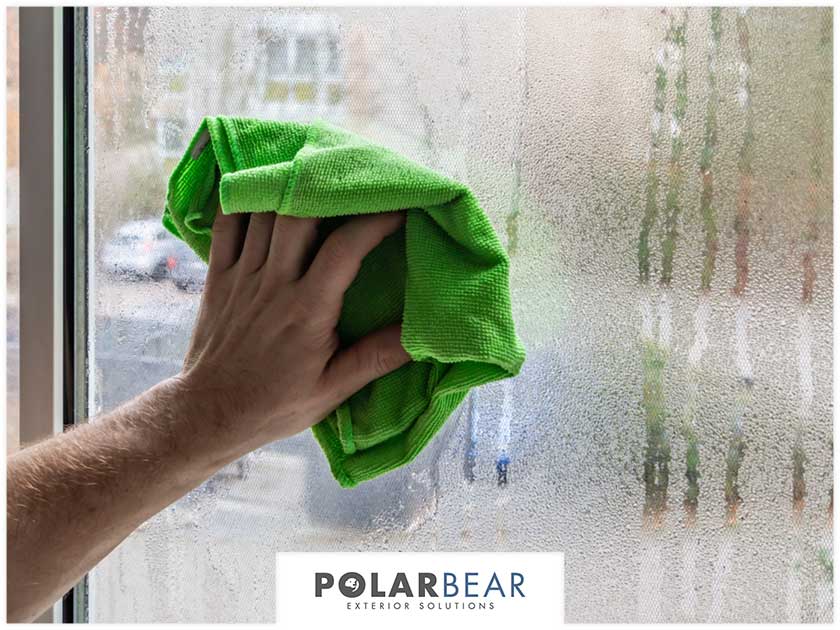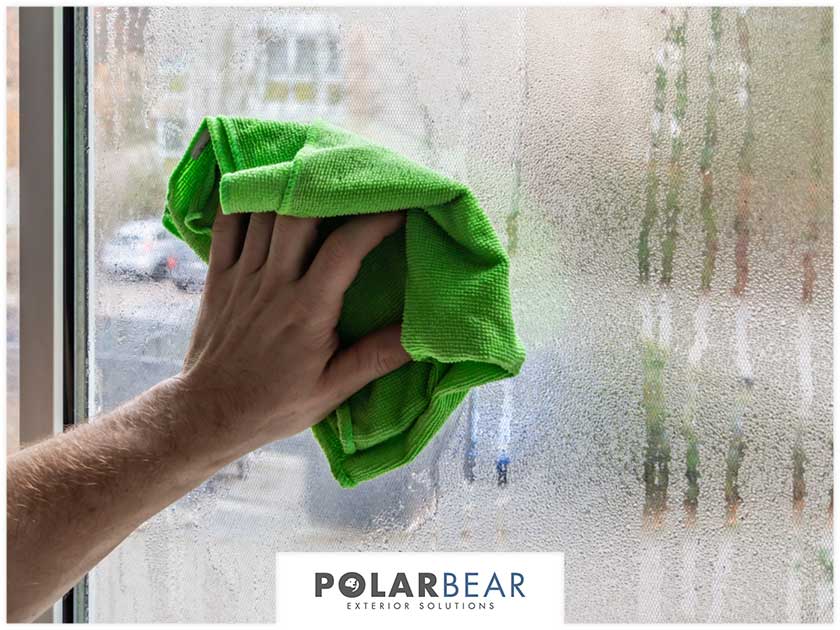Much like a cold glass of iced tea on a hot summer day, condensation on your windows occurs when the inside and outside temperatures are vastly different. While it is mostly harmless, it can still be annoying, as it could obscure your lovely view of the outside. The good news is that there are easy ways you can minimize condensation or prevent it altogether. A trusted window and siding contractor shares how.

Common Causes of Window Condensation
As mentioned above, condensation on your windows is a natural occurrence brought about by changes in temperature. In the winter, for example, condensation can form on the inside of your windows because it is chilly outside but warm on the inside.
However, if the fogginess remains even after you give it a good cleaning inside and outside, this could be a sign of a more serious problem. Most modern windows are made up of two panes of glass with an inert gas sealed in between to help with energy efficiency and insulation. When the seals begin to fail, it could cause your windows to become foggy. If this is the case, you should call your window and siding contractor right away.
How To Prevent Condensation on Your Windows
Since exterior condensation is climate-related, you can simply wait for the sun to come out and dry up the moisture. You can also try applying water repellant to the outside of your windows. For interior condensation, your best option is to improve circulation around your house by opening windows and ensuring you have proper ventilation.
Polar Bear windows are some of the best and most energy-efficient replacement windows available in the market today. For all your window-related needs, call Polar Bear Exterior Solutions at (425) 290-5579 or fill out our contact form to request a quick estimate. We serve homeowners in Seattle and the surrounding communities.

